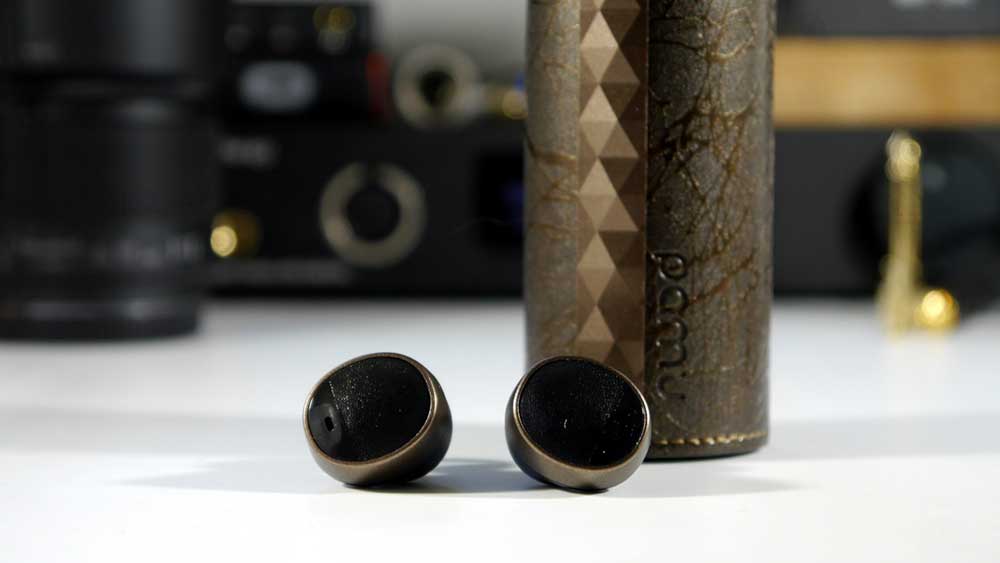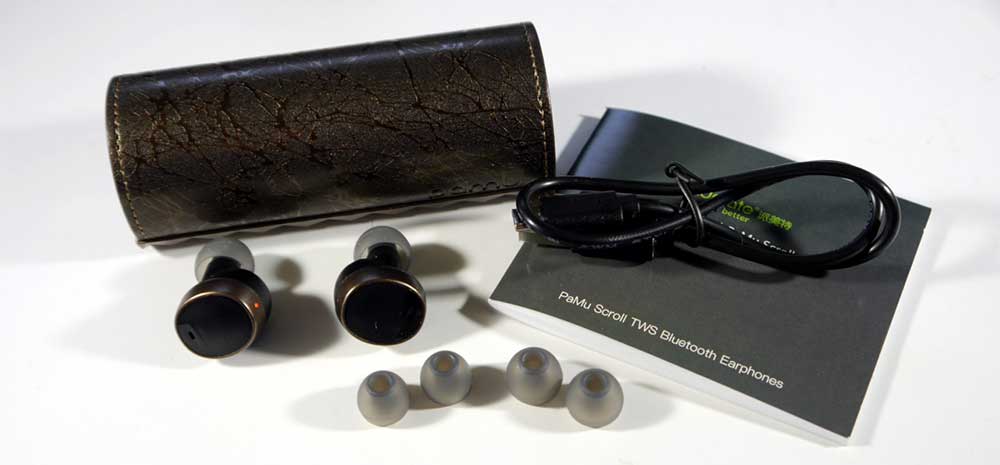PaMu Scroll Review: Wireless is Always Better
If you have seen Monster brand products, then you have probably already seen Padmate pamu earbuds. The Chinese company is – like many others – trying to emerge on the market, proposing itself no longer as an ODM, or as a manufacturer for third part, but with its own brand. Last year the company launched a fundraising campaign on Indiegogo promising the launch of the PaMu Scrolls, fully wireless earphones that could compete with the main names in this nascent sector. Three aspects on which Padmate aims: design, functionality and sound quality. Unfortunately, the last one is one of the least successful aspects.
The design of the PaMu Scrolls certainly does not go unnoticed, in particular as regards the charging case. This is made of faux leather (with various processes available) and looks like a cylinder about 10 cm high by 4 cm in diameter. The appearance is certainly unusual and original, even classy, just as the feeling of touch is of great quality – the goal of creating an object with a unique design is certainly successful. However, the aspect of the functionality of this design is less successful, since the generous dimensions of the case make it impossible to keep it in the pocket. This is a considerable defect, for a product actually theoretically voted for maximum mobility.

At one end of the case there is a micro-USB port, which allows recharging the internal battery and the battery of the two earphones. One of the particularities of the PaMu Scroll is the possibility of hooking an additional module for wireless charging. It is inserted on the micro-USB port and goes to completely cover the side, integrating with the case. The other end, set a series of four LEDs that indicate the remaining charge of the case. They light up when you put the earphones in the appropriate positions.
Like many “true wireless” headphones, in fact, even the PaMu Scrolls use the case both as a base for recharging and as a battery that recharges them even when you don’t have a power outlet available. The battery estimated by the company is 3.5 hours, which reach up to 10.5 hours in total once the three additional recharges allowed by the case have been made. In reality, the battery is closer to 3 hours for the earphones and at 9 hours also considering the case.
The earphones are very small and made of black and bronze colored plastic. The build quality is good and the materials appear quite robust. The package comes with three different sizes of silicone earphones that cover the majority of cases.

The surface of the earphones is touch-sensitive. The commands are given simply by touching them. This is good, because you avoid having to push the earphones into your ear with potential discomfort. On the other hand, the sensitivity is high and often leads to accidental touches (for example if you touch a headset to position it better). The controls are identical between the two earphones (one touch to play / pause / answer / hang up, two touches to reject the call), but pressing the right earpiece twice, you go to the next song, while the same action on the earpiece left will activate the voice assistant on the phone. Alexa, Siri and Google Assistant are supported.
Microphones are limited, as can be expected from such headphones. Only in conditions of almost total silence and with a loud voice does the interlocutor hear us clearly. In other cases, the voice is perceived as distant and unclear. The PaMu Scrolls are therefore not ideal for public calls!
The PaMu Scrolls use the Bluetooth 5.0 standard, which should allow access to a higher audio quality than the previous iterations and a lower latency, with advantages both for those who are quality conscious and for those who use headphones for video content and games. There is no mention of support for codecs like aptX and LDAC, so PaMu Scrolls seem to be limited to the SBC codec – not exactly the best on the square as far as audio quality is concerned.
The connection is always stable and there are never any drops or interruptions, even in environments that are particularly rich in interference. The coupling with the source device takes place automatically after the first time. It is sufficient to remove a headset from the case for this to perform pairing.
From the functional point of the PaMu Scrolls, it works quite well and do not give rise to criticism. On the audio quality front things are very different. The PaMu Scrolls, despite being proposed as a decisive step forward in sound quality, are actually rather lacking both in terms of frequency response and in terms of the more “technical” aspects.
The PaMu Scrolls have an obviously unbalanced response, with the bass and treble being much more emphasized than the mids – left instead in the background. But it is the lows that have the absolute primacy with regard to presence, given that they appear on top of everything else. However, there is not a good rendering of the details, nor a particular ability to distinguish the single instruments to act as a counterbalance to this imbalance; the sound appears mixed and slow, as if it were crushed. All the instruments appear condensed in a single point, with minimal variations in positioning between the right and left channels, leading to an almost claustrophobic feeling. It does not seem the sound of headphones that focus on the quality of the audio; if anything, it seems the sound of cheap headphones that focus more on aesthetics than on sound.
A compromise perhaps necessary given the “true wireless” nature, but the PaMu Scrolls are a real disappointment from the acoustic point of view. And they are even more so when you consider that there is a strong background buzz that is always present when the headphones are turned on and playing, and that is so strong that it is always audible, unless you want to reach high volumes.
Ultimately, what appears to be an excellent product then turns out to be mediocre to listening. The PaMu Scrolls are a product that could be defined – from the acoustic point of view – “discreet” at the launch price of $39 and “sufficient” at the current price of $79 (about € 70), but unfortunately not up to the final price of $ 149. Although they are well made, functional and interesting from the point of view of aesthetics, the sound leaves much to be desired. And even if the sound quality is not the priority, the other features do not make them such that they can compete with products from better-known brands with better support and better features, albeit with a price sometimes higher. They can be a good compromise only if you want headphones with Bluetooth 5.0, excellent connectivity and stereo audio on call, but with the limited audio quality. PaMu Scrolls are sold through the Moldac website.


